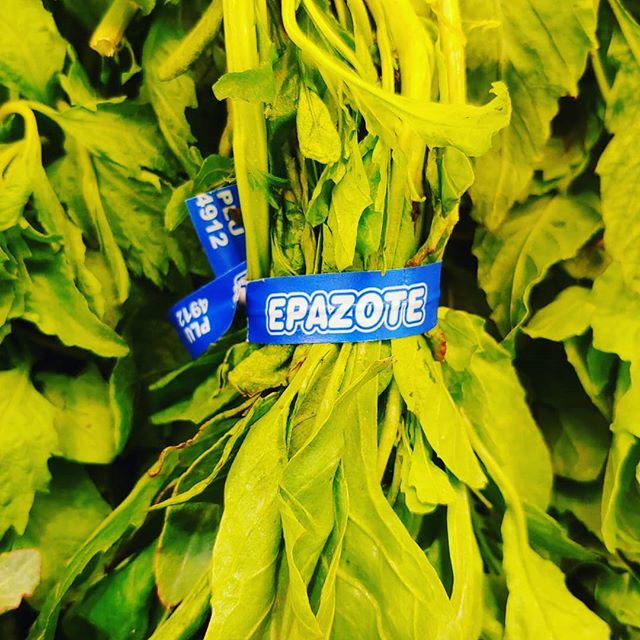
When black beans are served in Mexico they are frequently cooked with epazote (Chenopodium ambrosioides), also known as wormseed or Mexican tea. The name epazote comes from the Nahuatl word epázotl, which is derived from the word for skunk, epatl, no doubt named for the herb’s pungent taste.
It’s a common herb fresh even in the conventional grocery stores here and a treat to use when you are in Mexico!.
The Mayans, Aztec, and other Mesoamerican cultures used epazote as a flavoring in their cuisines and in small amounts as a tea. It was paired with beans because of its carminative effects. Medicinally it was used as a low-dose, cold-infused tea (1-2 ounces up to four times per day) to expel worms, to treat asthma and dysentery, for menstrual cramps, and as an emmenogogue. As a medicine it should not be used during pregnancy, nor by those with cardiovascular disease because it is considered a cardiac stimulant.
As a flavoring agent, the fresh leaf is added to dishes for the last fifteen minutes of cooking. It is used in stews and bean dishes, as well as in mole verde and salsas.
If the fresh herb is not available it can be used dried, but wrap it in a cheesecloth sachet and pull it out before serving. For those who like epazote it is described as earthy and minty with a lingering tangy, citrus taste. Those who don’t like it often say it tastes like turpentine.
Epazote grows easily in dry soils of southern climates and us often found growing wild. In colder regions it can overwinter indoors.




